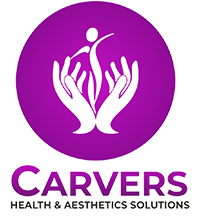
Fillers
A filler treatment is a cosmetic dermatological procedure that is used to minimize the appearance of facial lines and wrinkles to restore a youthful look. It is a great treatment option for those who want to eliminate the signs of aging but are not willing to undergo invasive treatments such as a traditional facelift. It works by filling up areas of the face that are prone to sagging to bring back its natural volume and fullness. Although it does not bring permanent results, it offers a simpler, safer, and cheaper way to look younger. Dermal fillers also treat wrinkles on the face. They’re primarily used to treat smile lines, though the fillers can also be used to plump up the lips or cheeks. Sometimes, they’re used for hand treatments or to reduce the appearance of scars.
Who should undergo & expected results
A dermal filler treatment is most beneficial for patients who have the following signs of skin aging:
- Wrinkles
- Fine Lines
- Pitted Scars
- Furrowed Skin
On the other hand, a filler treatment is not safe for those who:
- Are taking blood-thinning medication, including aspirin, vitamin E, or any type of NSAID
- Have herpes simplex or herpes zoster
The fillers are expected to temporarily smooth out surface flaws on facial skin. The length of time the results are expected to last may differ depending on the specific product used.
Since the fillers are only injected into the skin, the treatment does not require a long recovery and downtime. Patients can safely go back to their normal routine after the procedure, as long as they avoid strenuous activities and excessive sun exposure. Meanwhile, normal post-procedure symptoms are expected to go away after a couple days.
How the procedure works
A dermal filler works by raising or puffing up particular areas of the face. It is most commonly used in areas that succumb to sagging skin, which creates a hollowed look. The specific manner as to how the procedure works depends on the type of fillers being used.
A filler treatment can be carried out by a dermatologist or a cosmetic surgeon. Regardless of which material is used as the filling agent, a greater part of the process is generally the same. The patient first receives a local anesthesia to numb the facial area. Once the anesthesia has settled in, the surgeon or dermatologist injects the filler into the predetermined area, just under the skin. For fat graft, however, the fat that will be used as the filling agent is first harvested from another part of the body.
Each procedure will take approximately 15 minutes. However, depending on the severity of the condition and the size of the treatment area, succeeding sessions may be necessary. If so, each session is spaced at least two weeks apart.
Possible risks and complications
Filler treatment sessions may cause some symptoms right after each procedure. The following symptoms are normal and temporary, typically lasting up to 3 days after the procedure:
- Redness
- Swelling
- Pain
- Itching
The effects of dermal fillers can last anywhere between three months to two years. It depends on the product being used and where on the body the product is being injected.
Facial fillers are synthetic or naturally occurring substances injected into the lines, folds, and tissues of the face to decrease the appearance of wrinkles and restore the facial fullness that decreases with age. These injectables are also called dermal fillers, injectable implants, wrinkle fillers, and soft-tissue fillers. They’re used to erase smile lines, plump up cheeks and lips, and correct acne scars. The vast majority of fillers are absorbable. Thus, they offer temporary results that last from months to a couple of years, depending on the product and the person. Some fillers are marketed as permanent and can last up to several years.
Facial fillers are products such as collagen, hyaluronic acid and calcium hydroxyl apatite that rejuvenate facial skin by reducing or eliminating wrinkles, raising scar depressions, enhancing lips and replacing soft-tissue volume loss through facial injections. With age, our skin becomes more susceptible to wrinkles and sagging. Exposure to sun and years of muscle movement (squinting, chewing, smiling) contribute to tissue breakdown of the skin.
Facial fillers are temporary to long-lasting solutions administered through a few tiny facial injections on specific areas of the face. Various types of facial fillers are available; each is designed with one or several purposes, such as wrinkle reduction and lip augmentation. A qualified dental or medical professional can help you determine which facial injections and what injectable fillers treatments are right for you. Facial fillers will volumize creases and folds in the face in areas that have lost fat and collagen as we age. Hyaluronic acid is the natural filler substance in your body. The face starts to lack volume and appears aged with deeper nasolabial folds, unaesthetic marionette lines, a deeper mentalis fold, the lips start to thin, and turning down the corners of the lips. Hyaluronic acid fillers are then injected extraorally right underneath these folds to replace the volume lost which creates a younger look in the face. Dermal fillers can be used for high lip line cases, asymmetrical lips around the mouth, lip augmentation, and completing cosmetic dentistry cases by creating a beautiful, young-looking frame around the teeth.
The average length of filler injections is about 10 to 20 minutes per session, depending on the individual and the amount of areas being treated. Some of the most common side effects include: allergic reaction, bruising at injection site, numbness, and temporary redness, swelling, pain/tenderness, or discoloration. Dermal filler injections require very minimal downtime, allowing patients to return to work and their normal activities directly following treatment. Yet for the first 24 hours, individuals may be instructed to refrain from strenuous activities and excessive sun or heat exposure.
Injectable wrinkle fillers can give you a more youthful look for a fraction of what a traditional facelift costs. Most will fill hollows, lines, and wrinkles in less than 30 minutes with results that can last from 4 months to more than a year.
Injectable wrinkle fillers, unlike
Wrinkle fillers can also be used as “volumizers,” plumping and lifting cheeks, chins, jawlines, and temples; filling out thin lips, and plumping sagging hands.
How long the results last varies from several months to over a year or two. Some research shows that repeated injections may help stimulate the body’s own natural production of collagen. That will help reduce the number of lines and wrinkles. There is also some evidence that less filler is needed over time to achieve the same look.
Use sunscreen daily to help preserve the filler and help protect against post-inflammatory pigment changes due to the needle sticks from injections.
